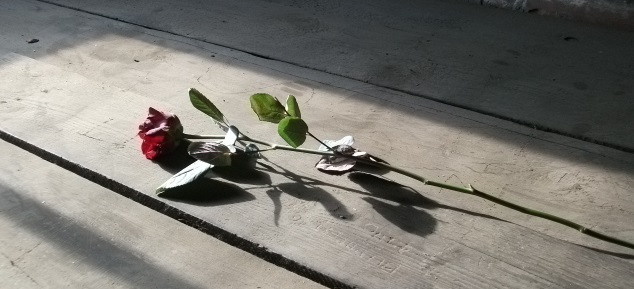In my last post, Commemorating to Forget, Part 1, I discussed how memorials and commemoration in general is almost always created with the purpose of forgetting less savory aspects of the history being commemorated. While this in no way is unique to Holocaust memory or to Poland, I outlined some of the typical forms of Holocaust memorialization I saw while in Poland this summer and discussed how these memorials commemorate a specific version of the past, while obscuring aspects that the creators would rather were forgotten.
That last post talked a lot about the problems I see with commemoration, but it didn’t really provide much in the way of solutions. That’s what Part 2 is here for.
The problem, I believe, is in the very nature of most memorialization. Monuments and plaques can only ever tell part of the story. Complexities and controversies are not easily illustrated through monument iconography and the amount of text that can realistically be displayed is minimal. For me, the answer to this problem of easily obscured history in memorialization is simple: museums. As an aspiring museum professional I am, of course, at least partially biased in favor of museums. At the same time it seems clear to me that these institutions are the only place where the general public can engage with the memory and history of an event like the Holocaust while still being exposed to the complexity surrounding it.
Sadly, not all museums achieve this. The United States Holocaust Memorial Museum falls into the typical American trap when it comes to Holocaust commemoration. It glorifies America as the liberator of the camps and down-plays the shameful American policies that left victims of Nazism with no refuge.
In a number of museums we visited in Poland the memory of the Holocaust and the pre-war contribution of Polish Jews is commemorated, while conveniently forgetting the less savory aspects of the history of Jews in Poland. Smaller museums in former synagogues are especially susceptible to this. Tarnów easily had the best and most professional former synagogue museum we saw during our entire trip, even when compared to former synagogues in Krakow that likely have many more visitors. This museum did a fantastic job of highlighting the interconnected lives of Polish Jews and Gentiles in the city and the surrounding area throughout its history.
And yet the interpretation presented in the exhibition conveniently neglects to discuss the two pogroms against the areas Jews that took place around the time of the First World War. This is not an aspect of Polish-Jewish history that deserves to be remembered in the eyes of the exhibits creators, and thus it must be obscured.
On a much larger scale, the Schindler Factory Museum equates the suffering of Poles and the suffering of Jews under the Nazi occupation by making it unclear to visitors when they are “learning” about the Jewish experience or the more general Krakow experience during the war. Because the suffering of non-Jewish Poles at the hands of the Nazi occupiers was largely obscured for years, some examples of memorialization like this museum have overcompensated in their commemoration of this suffering and have in the process obscured the narrative that is unique to the Jewish victims.
While clearly not all museums are capable of achieving the lofty goal of educating the public about an event or of a period with all of its complexity, even in their imperfect form they are far ahead of the typical memorial or monument. A well-developed and intellectually engaging museum about the Holocaust would do even more. Such an institution would be capable of commemorating the victims and celebrate the resistors while still addressing the complexity surrounding collaborators and bystanders. It would be capable of telling the Jewish narrative while not obscuring that of other groups. It could celebrate the foreign troops who liberated the survivors while still addressing the outside world’s lack of support for the Jews before the Final Solution. Most importantly, it would be able to memorialize the events of the Holocaust, but leave its visitors with an understanding of the complexity of the history surrounding it.
I have yet to visit this museum and I’m not sure it exists, but it should be what all Holocaust museums seek to achieve: to commemorate in a way that does not obscure or forget the details and unpleasant truths but instead remembers the event in full with an understanding of its complexity.


“to commemorate in a way that does not obscure or forget the details and unpleasant truths but instead remembers the event in full with an understanding of its complexity.” This is absolutely spot on!